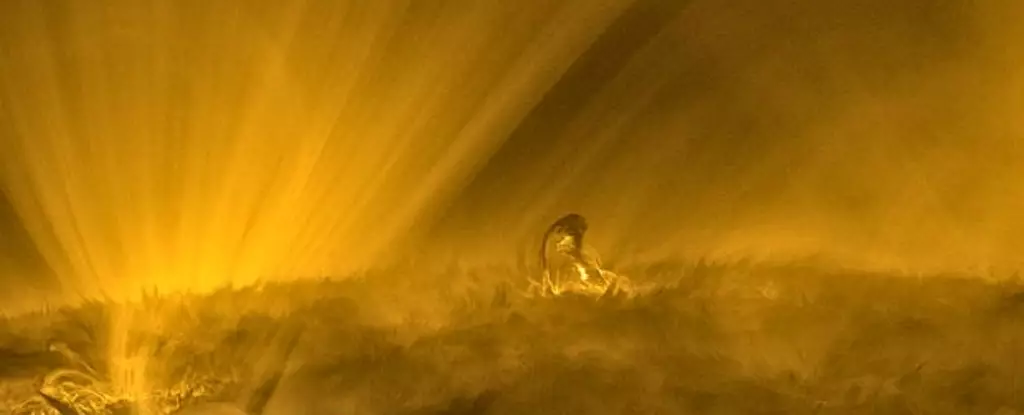When we think of the Sun, we often picture a bright, fiery orb in the sky. However, a recent video captured by ESA’s Solar Orbiter mission has revealed a side of the Sun that we have never seen before. In this single frame from the video, the Sun appears fluffy, with feathery, hair-like structures made of plasma following magnetic field lines in its lower atmosphere. This unique perspective offers a glimpse into the Sun’s transition into the much hotter outer corona.
One of the fascinating features captured in the video is coronal moss, which is responsible for giving the Sun its fluffy appearance. These peculiar structures resemble fine, lacy features similar to moss found on Earth. Typically located around the center of sunspot groups, coronal moss forms in areas with strong magnetic conditions and large coronal loops. Spanning two atmospheric layers, the chromosphere, and corona, coronal moss is so hot that most instruments are unable to detect it.
In addition to coronal moss, the video also showcases spicules and coronal rain. Spicules are tall spires of gas that extend from the Sun’s chromosphere to heights of up to 10,000 km. Meanwhile, coronal rain, visible around the 30-second mark in the video, consists of cooler, higher-density plasma clumps that fall back towards the Sun under the influence of gravity. This material, cooler than the surrounding surface, demonstrates the dynamic and complex nature of the Sun.
Unprecedented Views of the Sun
Missions like Solar Orbiter, the Parker Solar Probe, and the Solar Dynamics Observatory are providing astronomers with unprecedented views of the Sun. These missions offer valuable insights into the dynamic processes and structures of our nearest star, fueling our understanding of the fundamental workings of the Solar System. Through cutting-edge technology and innovative research, scientists are unraveling the mysteries of the Sun and unlocking new discoveries that could shape our future understanding of the universe.
The Solar Orbiter’s video captures not just a simple view of the Sun, but a complex and fascinating portrait of a dynamic and ever-changing star. With each new observation, we move closer to unlocking the secrets of the Sun and gaining a deeper appreciation for the celestial body that sustains life on Earth.



Leave a Reply